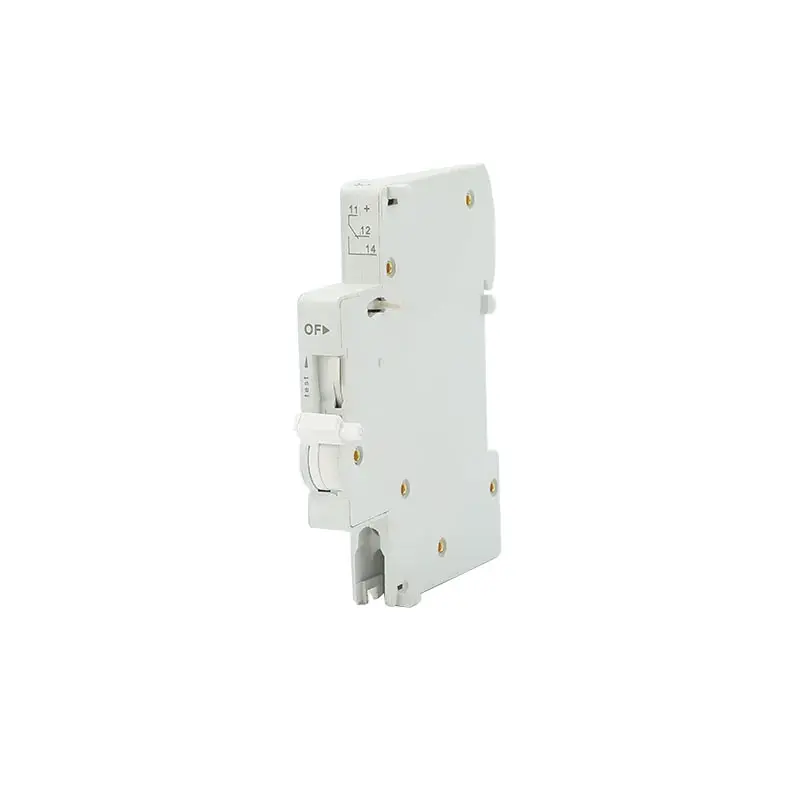Fahamu utendakazi wa kivunja mzunguko wa ELCB na waasiliani wa JCOF
Katika nyanja ya usalama wa umeme, vivunja saketi vya ELCB (Earth Leakage Circuit Breaker) vinajitokeza kama vipengee muhimu vilivyoundwa ili kulinda watu na vifaa dhidi ya hitilafu za umeme. Kwa kugundua hitilafu za ardhini na kukatiza sakiti, ELCBs huwa na jukumu muhimu katika kuzuia mshtuko wa umeme na moto. Hata hivyo, ikiunganishwa na vijenzi saidizi kama vile anwani za usaidizi za JCOF, utendakazi wa ELCB unaweza kuimarishwa kwa kiasi kikubwa. Blogu hii itaangazia umuhimu wavivunja mzunguko wa ELCBna jukumu la nyongeza la waasiliani wa JCOF katika kuhakikisha mfumo wa umeme ulio salama na bora.
Vikata umeme vya ELCB hufanya kazi kwa kufuatilia mkondo unaotiririka kupitia nyaya hai na zisizoegemea upande wowote. Inapogundua usawa (kuonyesha kuvuja iwezekanavyo), huvunja haraka mzunguko, kulinda mtumiaji kutokana na mshtuko wa umeme. Mwitikio huu wa haraka ni muhimu katika mazingira ya makazi, biashara na viwanda ambapo usalama wa umeme ni muhimu. Hata hivyo, utendakazi wa ELCB unaweza kuboreshwa zaidi kwa kuunganisha waasiliani wasaidizi, kama vile waasiliani wa JCOF, hivyo basi kuimarisha utendakazi wa jumla wa kikatiza saketi.
Mwasiliani msaidizi wa JCOF ni kijenzi kinachofanya kazi pamoja na mwasiliani mkuu wa ELCB. Mawasiliano ya wasaidizi wa JCOF yanaunganishwa kimwili na mzunguko mkuu na huwashwa wakati huo huo na mawasiliano kuu, kuhakikisha kuwa usumbufu wowote katika mzunguko unawasiliana kwa ufanisi. Ingawa haina kubeba kiasi kikubwa cha sasa, ina jukumu muhimu katika kutoa udhibiti wa ziada na uwezo wa kuashiria. Hii hufanya anwani za wasaidizi wa JCOF kuwa nyongeza muhimu kwa vivunja saketi vya ELCB, hasa katika mifumo changamano ya umeme ambapo ufuatiliaji na udhibiti ni muhimu.
Katika matumizi ya vitendo, anwani za usaidizi za JCOF zinaweza kutumika kwa madhumuni mbalimbali, kama vile kuashiria kengele, kudhibiti vifaa vya usaidizi au kutoa maoni kwa mifumo ya ufuatiliaji. Kwa mfano, ELCB inaposafiri kwa sababu ya hitilafu ya msingi, anwani za wasaidizi wa JCOF zinaweza kuanzisha mfumo wa kengele ili kuwatahadharisha wafanyakazi kuhusu tatizo hilo. Kipengele hiki sio tu kuboresha usalama, lakini pia kuwezesha matengenezo na utatuzi wa wakati kwa wakati, kupunguza muda wa kupungua na uharibifu unaowezekana kwa vifaa. Kwa hiyo, ushirikiano wa mawasiliano ya msaidizi wa JCOF na wavunjaji wa mzunguko wa ELCB inawakilisha mbinu ya kimkakati ya usalama wa umeme na ufanisi wa uendeshaji.
Mchanganyiko wavivunja mzunguko wa ELCBna mawasiliano ya msaidizi wa JCOF huunda suluhisho la usalama la umeme lenye nguvu. ELCB hutoa ulinzi wa kimsingi dhidi ya hitilafu za ardhini, huku waasiliani wa JCOF wakiboresha utendakazi kwa utendakazi wao wa kuashiria na kudhibiti. Kwa pamoja huunda mfumo wa kina ambao sio tu kulinda watu binafsi na vifaa, lakini pia hurahisisha shughuli za umeme. Kwa wale wanaotaka kuwekeza katika ufumbuzi wa kuaminika wa usalama wa umeme, kuzingatia kuunganisha kivunja mzunguko wa ELCB na mawasiliano ya msaidizi wa JCOF ni chaguo la busara ambalo linaweza kuongeza usalama na ufanisi wa ufungaji wowote wa umeme.

 Zhejiang wanlai Intelligent electric co., Ltd.
Zhejiang wanlai Intelligent electric co., Ltd.









